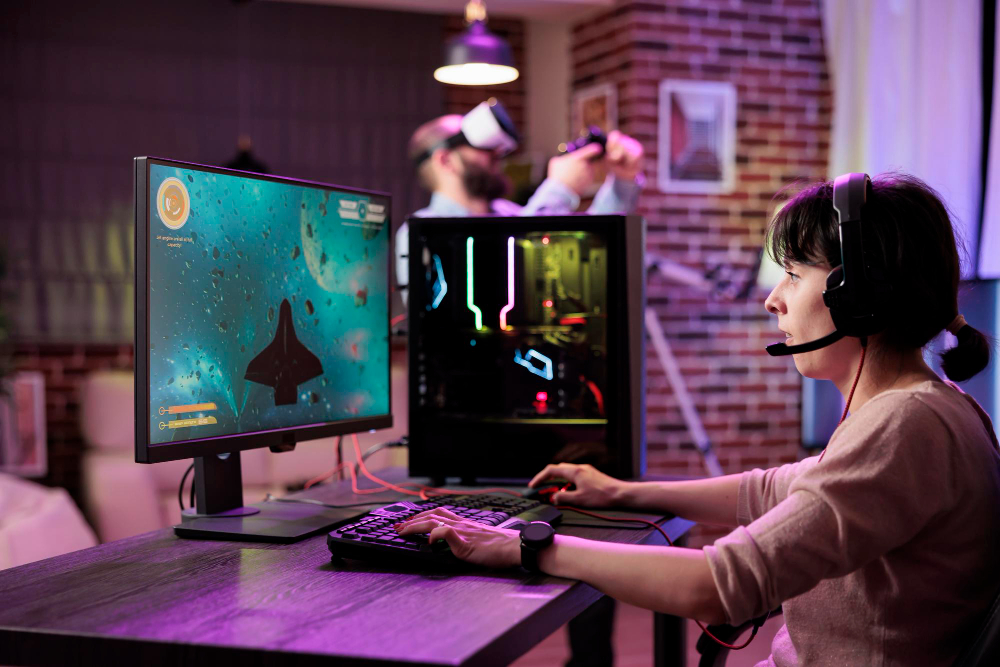Though there has always been debate about the boundaries between art and entertainment, gaming has become a recognized artistic medium and a cultural movement in the digital age. What was once a niche activity has blossomed into a worldwide phenomenon that unites narrative, graphic design, and user interaction like no other media. Gaming’s cultural value goes much beyond the screen and influences movies, music, fashion, and even education.
The Fusion of Artistry and Technology
Gaming is fundamentally an innovative fusion of art and technology. To build visually spectacular and emotionally compelling immersive worlds, game creators work with writers, musicians, and illustrators. Perfect examples of games that go beyond amusement are titles like The Last of Us and Journey, which provide narratives that challenge the emotional depth of classic literature and cinema.
Just recounting stories is an act of artistic expression. The art of game visual design has progressed to unprecedented levels. Think about the amazing settings of Red Dead Redemption 2 or the abstract elegance of Gris. These video games show that virtual worlds may be just as breathtaking as a hand-painted masterpiece. This medium differs from more conventional ones because it lets players do more than just see art; it lets them engage with it.
Gaming as a Cultural Movement
Accessibility of gaming is intertwined with its rise as a cultural trend. The medium has been democratized by the explosion of mobile gaming, especially on Android devices. Now, whether through indie darlings or immersive online experiences, anyone with a smartphone can investigate the artistic possibilities of gaming.
For those who enjoy mobile amusement, there are also good casinos for Android that mix sleek design with engaging gameplay, therefore enabling a greater audience to access the artistic quality of game design.
Furthermore, the expansion of gaming communities has turned personal experiences into collective ones. Games have developed into a social and cultural centerpiece thanks in large part to sites like Twitch and Discord. From casual gamers offering advice to professional streamers pulling millions of viewers, these communities have created a feeling of connection and shared love of the medium.
The Role of eSports in Gaming’s Artistic Narrative
The rise of eSports has given the influence of gaming more of a competitive aspect. Gaming at a competitive level is an art form in its own sense, showcasing players’ abilities and talents. Teams practice painstakingly, perfecting techniques that in their complexity and accuracy sometimes resemble chess moves.
Interestingly, the dynamic character of gaming has spurred discussions like one about esports vs betting. Although conventional sports betting has long been an integral component of entertainment, eSports presents a different kind of involvement. Viewers not only see but also study tactics, learn techniques, and, oftentimes, even take part themselves. This interactive layer reflects gaming’s capacity to blur the boundaries between creator and audience, therefore turning consumers into contributors.
Breaking Barriers in Artistic Expression
Gaming has also pushed the boundaries by tackling complicated subjects and societal issues. While Hellblade: Senua’s Sacrifice examines mental health via creative mechanics and sound design, games like Papers, Please address ethical issues. These titles show, like classic works of art, how gaming can inspire ideas and conversation. They also highlight how interactivity might help to improve emotional resonance.
Moreover, the arrival of virtual reality has created fresh avenues for artistic expression. VR games like Half-Life: Alyx and Beat Saber let users experience artistic productions just as they would be experienced in conventional art forms, therefore stepping straight into creative works. The ability of gaming to captivate viewers on various sensory levels is exemplified by its immersive quality.
The Future of Gaming as Art
The artistic possibilities of gaming will surely grow as long as technology develops. While blockchain technology promises to transform the ownership of digital art assets within games, artificial intelligence is currently being utilized to build more responsive narratives and procedurally generated worlds.
Institutions like museums and movie theaters, which now include games in their collections and events, also clearly show the growing acceptance of gaming as art. This acknowledgment from conventional cultural gatekeepers marks the status of gaming in the artistic canon.
Gaming is a dynamic, evolving art form that reflects and shapes our society and not just a form of entertainment. Gaming is only going to grow in its capacity to inspire, challenge, and move us in ways we never would have imagined as developers, players, and critics keep pushing the boundaries.

